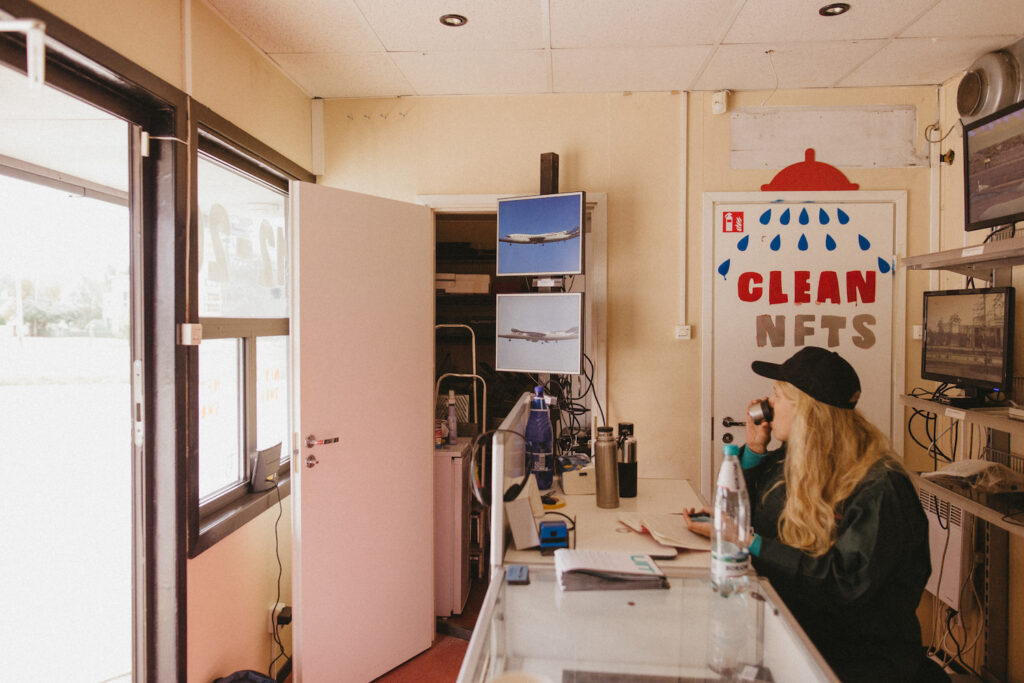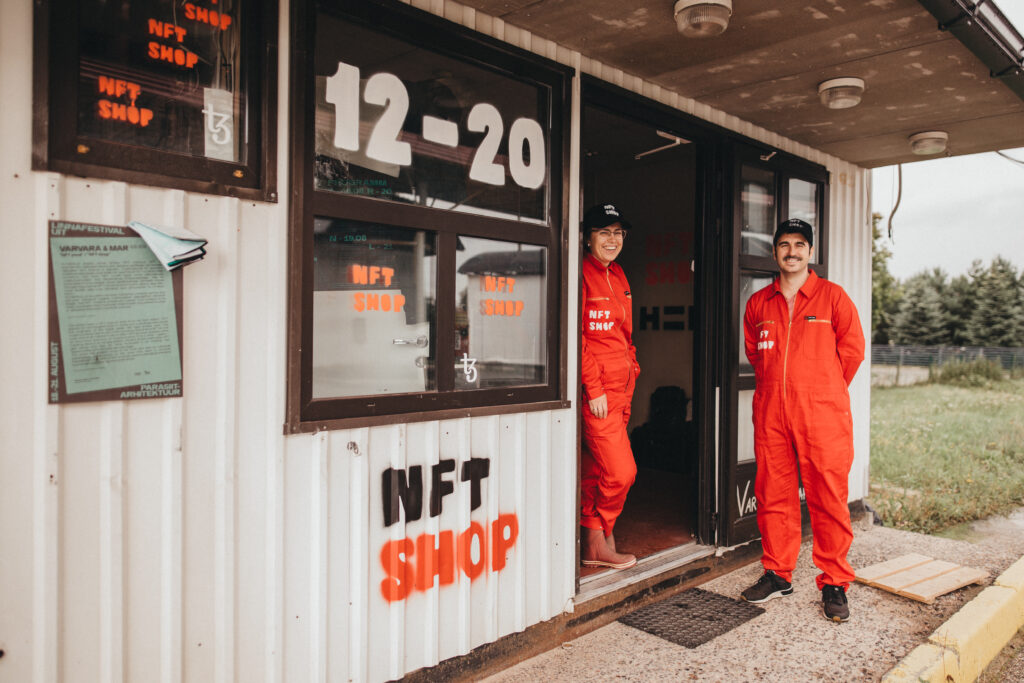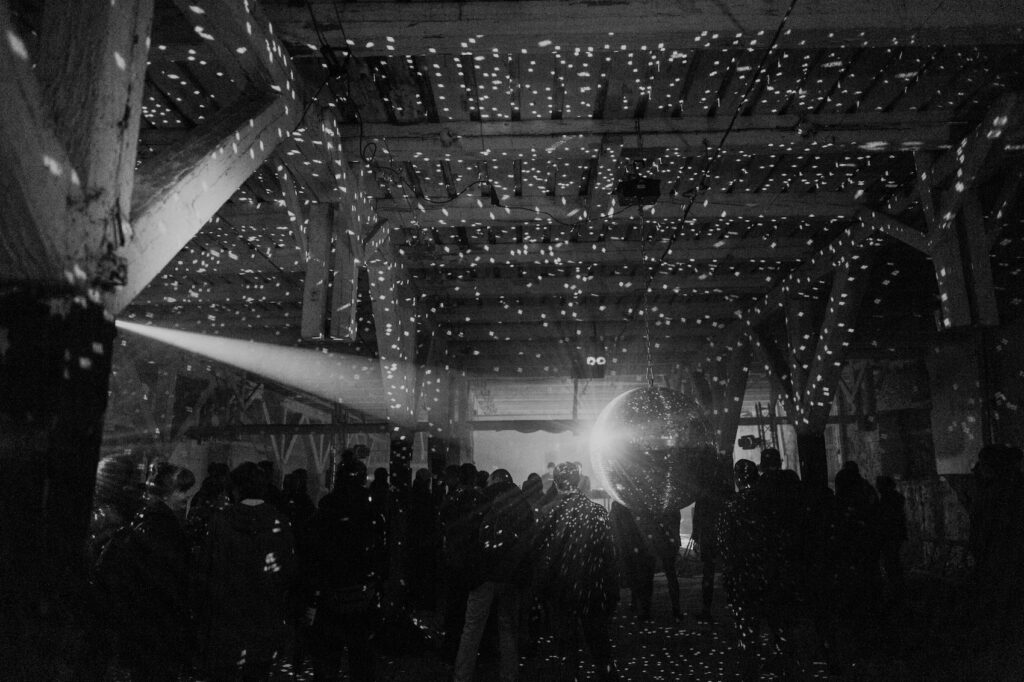Between August 18th–21st, Tartu hosted the urban festival UIT, which centred on a programme of installations spread around the city space. Curators Marie Kliiman and Kadri Lind had tasked local and foreign artists to view the city through a so-called parasitic lens, seeking new opportunities for growth in conditions of spatial scarcity or surplus.
Stigmatised fellow travellers
Who is dubbed a parasite in our current social circumstance? Are these not the people who are referred to in the fourth person to steer attention away from their distinct personalities, each of whom has a story to tell, so that we would not feel guilty for treating someone of our own kind with utmost lack of dignity and humaneness.
Designers and architects across the globe have developed hyper-economical packageable microhomes that instantly create a warm abode for victims of the refugee crisis, yet people a day’s car ride away from us are dying of hunger and cold under the open sky.
In 2016, the Portuguese social design and architectural office STUDIOMUDA designed a tipi-shaped tent that could be rested on the ground from a helicopter or plane like a parachute opening from the top. The idea behind the invention is that the material and stakes of the tent are weather-proof, and the tent is ready for use on touchdown as a temporary abode to protect people from the cold wind and rain. Four hammocks have been sewed into each corner of the structure enabling the people to not have to sleep on the ground.
In 2017, the LEXUS design prize was awarded to the Jordanian/Canadian architect Abeer Seikaly for his work ‘Weaving a Home’, which is a designer-engineered superlight foldable jurta-shaped tent also meant for use as a temporary dwelling for people who need it. The tent is made of solar light reflecting material and unfolds, structurally reminiscing a woven straw hat. Integrated on the roof of the jurta is a water tank which uses solar energy to either heat or cool the water according to need. The dwelling structure is well thought-through and economical.
We are justified in asking where these hyper-practical tent houses are now, seeing that the resources for their development originated from the structural funds of the same European Union, huddled on the borders of which are currently human beings who are being treated worse than how an average European might treat his dog.
I am currently teaching 8–12-year-olds at the School of Architecture, and I am witnessing how within an hour, children at that age are inventing and modelling shelters that would work in external conditions. When I have asked them why they think it is that there are still homeless people in the world living on the streets when even they as young children could build an appropriate shelter for them in a day, they are left, speechless.

New perspectives
The UIT festival highlighted, with remarkable success, the simplicity of the means required to create spatial and philosophical change. The objects were crafted by artists, volunteers, and children, with no need for professional builders. Recycled materials were sourced and used. The tools were mainly rented. The main ingredients were vision and initiative. The festival seemed to open a window to a parallel universe, prompting ideas of what a city could be like if people had the courage to think outside the box and act in collaborative mode.
Roland Seer and Carol Schults (EE) built a minimalist sauna called ‘Mudil’ on the stairs of the bank of the Emajõgi River; the object was open to all pre-registered visitors. The sauna fit with the stairs like a glove, and it was possible to jump straight into the river from the boat pier located in front of the sauna. For me, the sauna brought to the forefront the history of Supilinn, where bathing in the wooden district used to take place in small, shared saunas, traceable by the smoke coming out from their chimneys in courtyards. The Barge Yard that opened last year has filled this gap on the opposite bank of the river, as a public sauna came with the building, and there is also a rentable floating sauna on the river.
A strong and memorable landmark object authored by Eva Mustonen (EE), ‘Untitled (Frog Pond)’, comprised a floating bridge built on the waters of Supilinn pond, which concluded in a platform floating in the middle of the waterbody. The work emphasised a most beautiful, biodiverse pond that has long been a pain for real estate developers since the rest of the riverside has been built full of new terraced houses. Right next to the frog pond there is a group of newly developed buildings that are packed together so tightly that they seem totally out of proportion—located where the courtyard between buildings should be is, instead, a neighbouring house. The real estate developers have gone out of their way to maximise the exploitation of the riverside land but that has resulted in basically ruining the traditional volumes and rhythm characteristic to the buildings and courtyards of Supilinn as a milieu-valued area.
The UIT festival highlighted, with remarkable success, the simplicity of the means required to create spatial and philosophical change. The objects were crafted by artists, volunteers, and children, with no need for professional builders.

A regimented vs magical environment
At the same time as the UIT festival was up and running, the Estonian society became subject to measures that enable access to space as per covid-certificates. For me, this is problematic because people are not only denied access to the cinema, theatre, cafeterias, and museums, but more importantly to education, culture, time with friends and family. Segregation, implemented for whatever reason, has always created social cracks which anchor down educational and economic stratification. It only takes a few years for these behavioural adjustments to become so fixed that society risks losing certain groups of people who in the worst case might slip through the cracks of the social safety net entirely.
The pandemic has turned our spatial cognition upside down, people have been pushed into their private sphere and outside the home everything is regimented and categorised. By now it has become very difficult to experience that freedom-to-breathe punk ambiance, unpredictable occasions, surprises, or adventures. This is the kind of energy that UIT provided with its unpredictable objects and temporary hijacking of space.
An extraordinarily funny enterprise was conceived by the artist duo Varvara&Mar (EE), a crypto station ‘NFT Shop’, where a recently closed gas station in the Raadi district of Tartu had been entirely overtaken as a place for selling crypto art. The gas price board was showing crypto prices and the artists were dressed in red overalls and caps, covered with crypto logos from head to foot. The artists make crypto art which they then sell for crypto currencies on the online crypto art market and buy works by other crypto artists as well. At the time of visiting them, the artists were involved in a heated discussion with two gentlemen wearing gold chains and glossy silk shirts who claimed to be crypto millionaires.
This crypto station held the most parasitic energy for me, since in addition to spatial occupation, wide-spread concepts of the value of oil, money and art were also occupied and what otherwise takes place in the virtual sphere was here brought into physical existence.
The crypto world is a space where the rules and segregation, currently dominant in the physical world, do not apply. Thereby, it is a more democratic space than the world we normally live in, which might explain the immense growth in its popularity over the recent years. At the same time, there are some prerequisites to accessing it, mainly to do with a specific skillset and the existence of an electronic portal.


Liberated space
A sight of its own was the location of the by now legendary final event of UIT, which each time occupies an idle space and turns it into an impressive party site using simple means. Dance parties have been held in the boiler house, police station, metal factory, the hangar overgrown with vegetation, and a Chinese restaurant. This time, the party took place in large horse stables dating back to the previous century, which had been standing empty for an extended time, waiting for a new function to make them useful again. The stables had been properly cleaned from century-old garbage, and with small interventions like mistra-carpets, large disco balls and lighting, the organisers had achieved a truly magnificent and magical party location that had a certain 1990s’ underground vibe to it.
In evolutionary terms, we have reached a point where individual freedom is only possible in one’s head, because even interacting with people from your inner circle has become an unpredictable field, loaded with secret landmines.
Teaching the young still unveils the spark of human essence, our inner drive toward exploration and freedom. Creativity and the will to conquer the unknown presses through the cracks of consciousness like dandelions through asphalt. Young people want to, head-on, grab a hold of those glue guns and cordless power drills and create something entirely new, something that originates from their creative spirit that has not been cropped, enumerated, or classified in any way.
UIT presented the same type of fresh energy because all objects had been erected quickly within a matter of days, using simple means. The most impressive aspect of UIT is its ability to showcase that to change the material reality, we need imagination, thinking outside the box and formidable initiative. Unfortunately, what we are seeing instead is how ingenious and awarded spatial solutions to burning global social problems remain but models on the computer screen or a completed prototype, which will not, however, reach the people needing it through the tensions of the political minefield.

MADLI MARUSTE is an architectural semiotician, teacher at the School of Architecture, and author on the Instagram account ‘Eesti ruum’, where she writes about architecture, heritage, and space.
HEADER photo by Fotomorgaana
PUBLISHED: Maja 107 (winter 2022) with main topic Evolution or Revolution?





